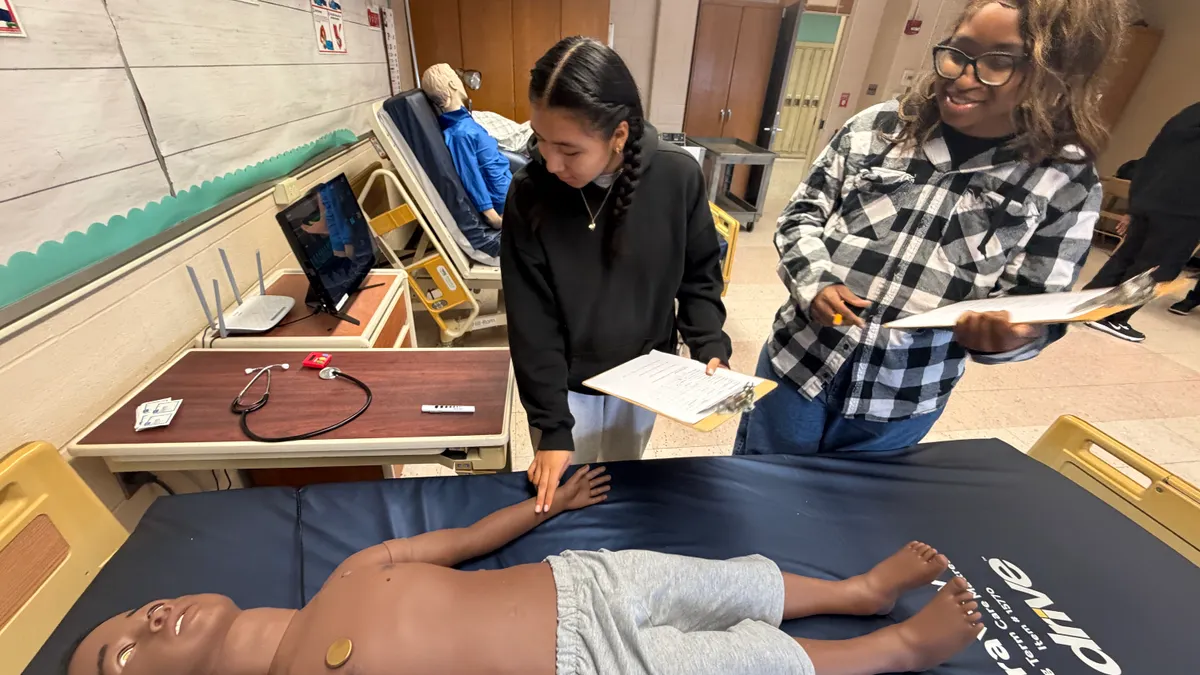John Drazan is hardly your typical math and science educator and researcher. As a former college basketball player and an engineer, Drazan is more likely to illustrate these subjects using a homemade $60 vertical jump plate to let students make slam dunks on their own, rather than using handouts and textbooks.
“Science not communicated is science not done,” Drazan told Education Dive in an interview. “I tell that to my students all the time.”
Drazan knows personally how powerful the link between sports and these subjects can be in transforming learning. For years as a student, he found math and science boring — until a high school physics teacher and Olympic-level swimmer taught him the connection between math, science and biomechanics in sports.
That’s why Drazan, who is about to start a postdoctoral fellowship at the University of Pennsylvania, focuses on sparking the same interest in high school students as the STEM director for 4th Family Inc, an Albany, N.Y., non-profit.
“When you give kids the opportunity to collect data on the football field or basketball court, you don’t know who will jump the highest,” he said. “So the teacher, instead of being an overlord of science, is now co-exploring with students.”
Real-world learning
The world of sports is a common language shared by many. Whether fans of basketball, swimming, running or curling, sports provide a wealth of data sets that can be folded into mathematics and science lessons with just a few steps. These statistics can even be used in classes as young as kindergarten, where students are learning the very basics about numbers and what they symbolize.
“For example with Kindergarten students, and all students, we want engagement, so we might pose the questions how many times can our class dribble a ball in 10 seconds,” National Council of Teachers’ president Robert Berry wrote to Education Dive in an email. “Collect, discuss, record, represent, connect. As we move to middle grades and high school students, they can use sports data and analytics for mathematical modeling. That is, they can use data to make a case about a player’s performance.”
Discovery Education is just one organization linking sports data into science, technology, engineering, arts and mathematics (STEAM) lessons. Through a new partnership with EA Sports and the National Football League Players Association, the company designed a program called EA Sports Madden NFL Football By The Numbers, a free online middle school math and science curriculum around football statistics.
“Real-world data is powerful because it lets students see the usefulness of mathematics in real contexts,” Discovery Education’s director of math instruction, Patrick Vennebush, wrote to Education Dive in an email. “Research suggests that the use of real-world data improves student retention, motivation, and conceptual understanding.”
Tech tools
Using technology tools and online portals to access sports statistics and data is an easy way to find material to bring to classrooms. Number sets, whether they're tracking how many times field goals are missed during a Super Bowl game or humidity readings against finish times in the Boston Marathon, can be found online with just a bit of sleuthing on the part of teachers and students alike.
“Websites and mobile tools are powerful when used strategically and purposefully connected to learning goals,” Monica Burns, author of “Tasks Before Apps; Designing Rigorous Learning in a Tech-Rich Classroom,” wrote to Education Dive in an email.
Drazan couldn’t agree more. One assignment he has posed to students looks into whether being a left-handed player in the National Basketball Association (NBA) was an advantage or disadvantage. Students went into the NBA’s online database and looked up statistics between its left-handed players and those who favored their right hand. The result? Discovering that you could be slightly shorter and still play professional basketball as long as you dribbled and shot with the left hand — an assessment that came from students going online and directing the research themselves.
“The really cool thing about this generation is they’re digital natives, they’re fascinated by social media and other technology,” said Drazan. “So they already have a high level of comfort, they’re motivated to learn about a player’s performance, and figure out the best way to visualize it.”
















